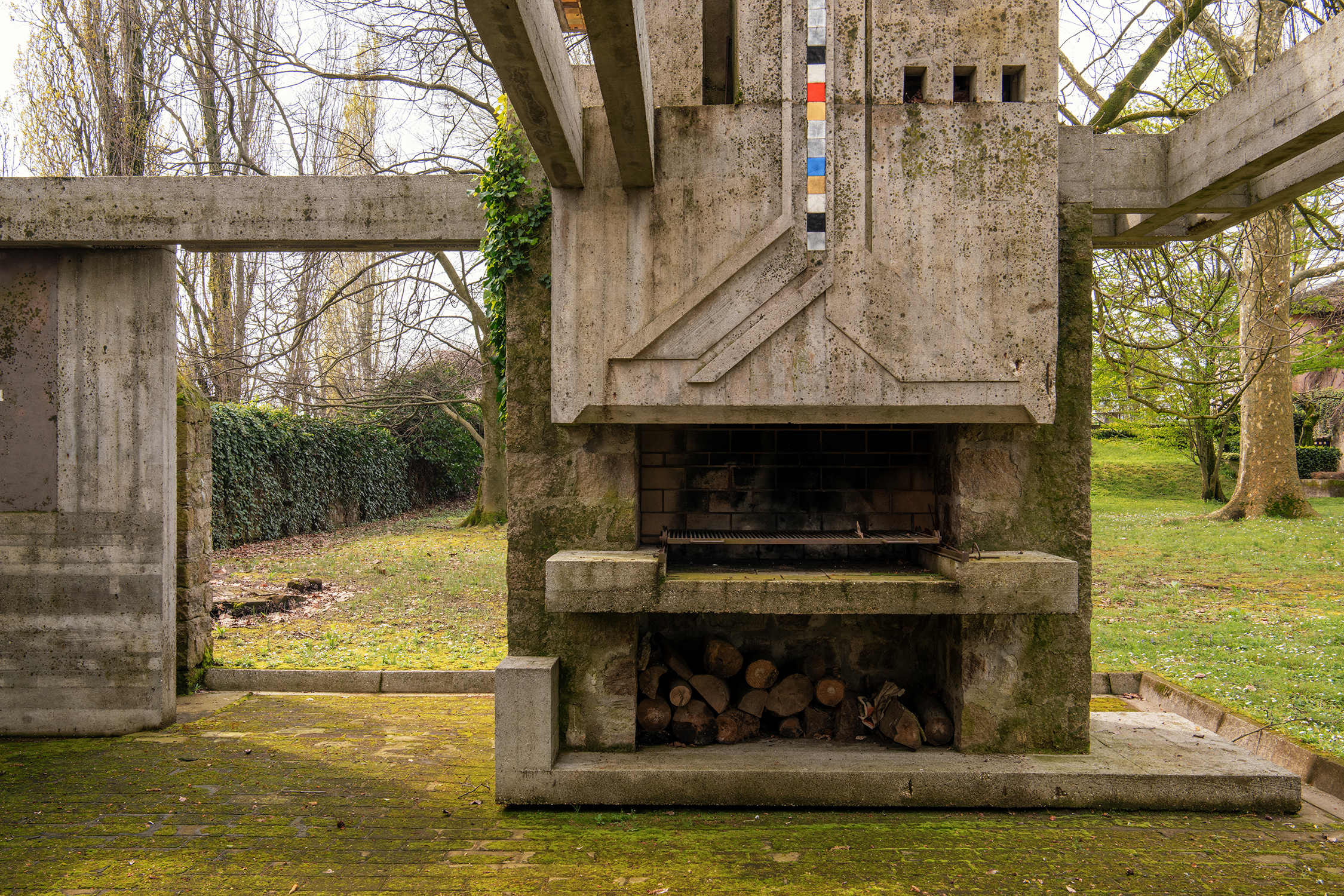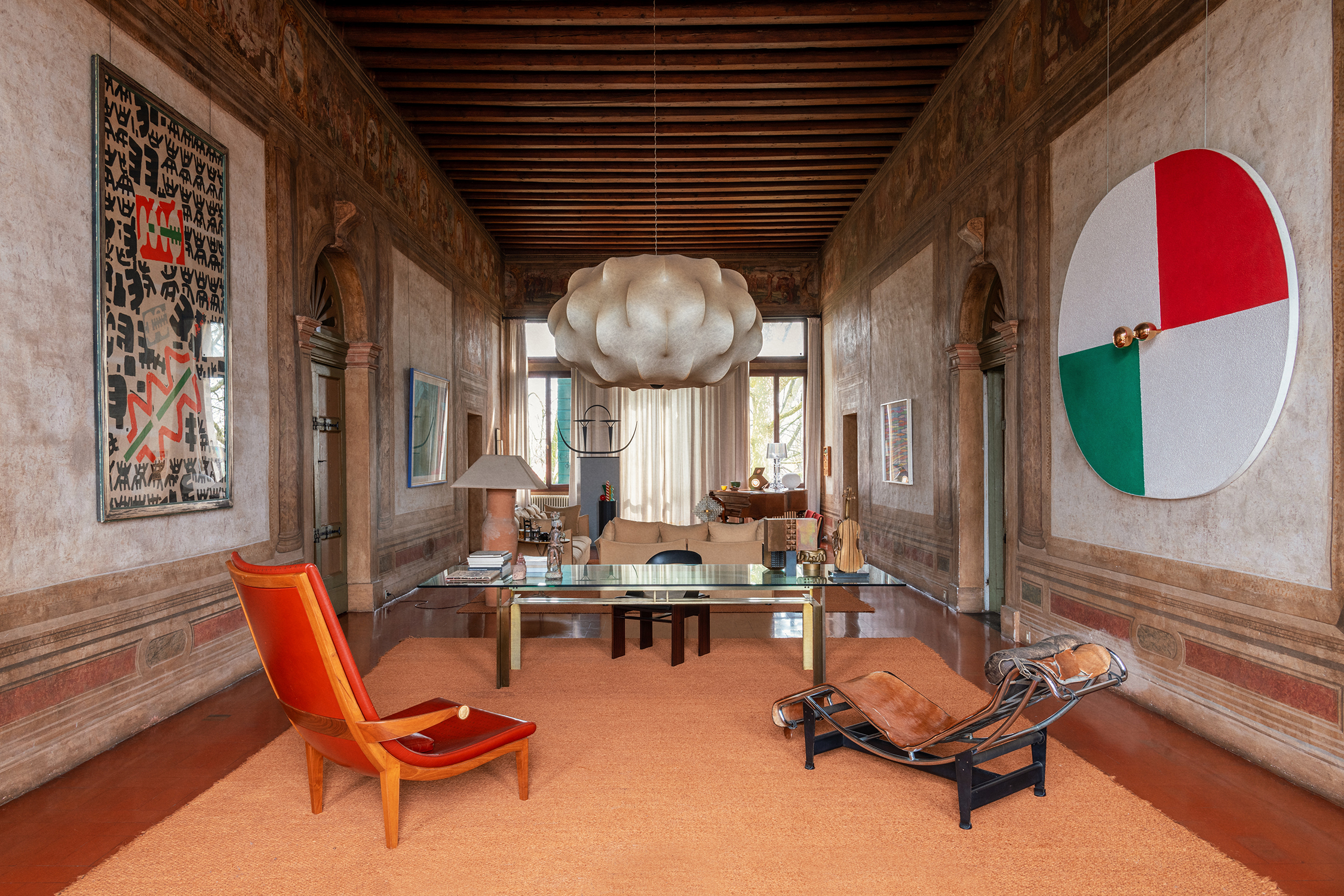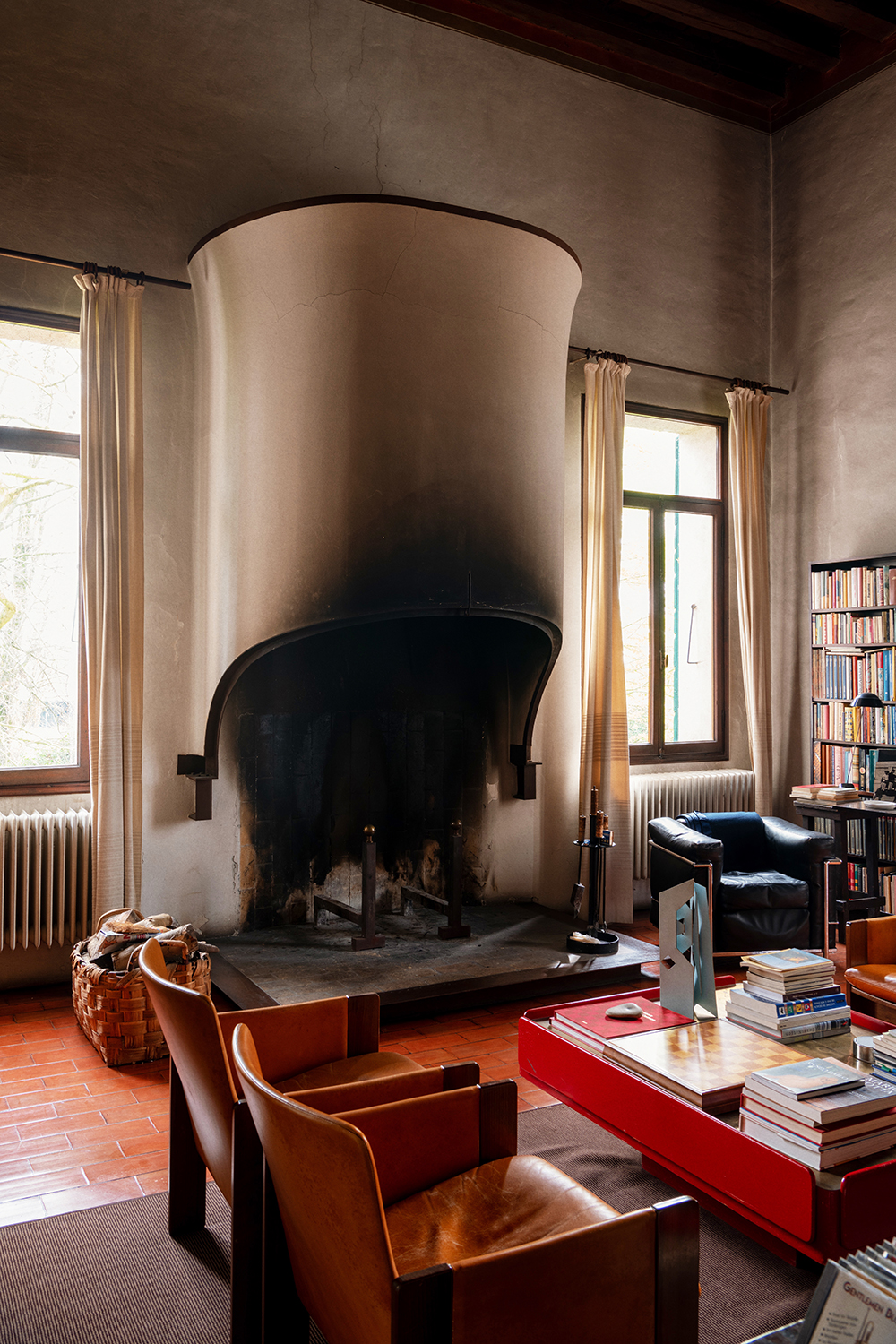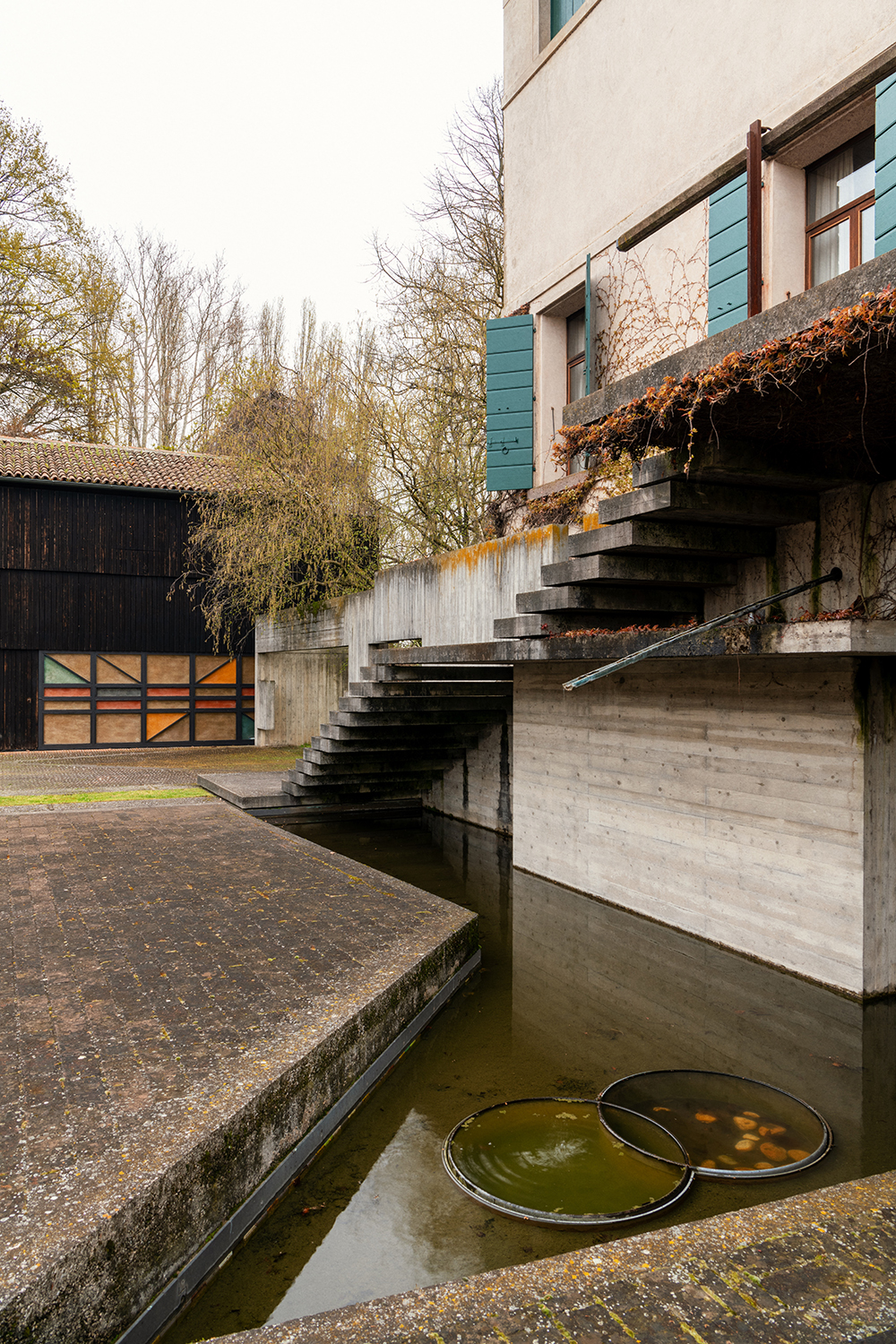
Il Palazzetto
& the objects that overcome the wickedness of time
We arrive at the gates of Il Palazzetto under the blistering midday sun. The weathered wood panels, arranged in a geometric motif, might pass as inconspicuous to the untrained eye. Federico Businaro appears, and guides us to a shaded spot alongside the restored Morgan he learned to drive in thirty or so years ago.
Under the portico of a 16th-century stone stable, we face the disarming grandeur of Il Palazzetto head on. The modernist staircase reveals that this is no ordinary Italian villa. Though imposing, it feels entirely at ease with its surroundings, assimilating with the palladian-style villa that has become cloaked in crawling ivy over the decades. But beyond the spectacle, the staircase is a monument to two families: the Scarpas, who built it, and the Businaros, who lived it.

Walking directly through the kitchen designed by Tobia Scarpa, past chairs arranged around a Quatour table (also Scarpa), bathed in the warm glow of an Ingo Maurer lamp, we take a seat outside on Monobloc chairs — the white, stackable plastic kind that appear almost everywhere. Before approaching the legacy of Il Palazzetto, we address the obvious: the extensive collection of modernist furniture that exists within its frescoed walls.


There is a sense of timelessness to Il Palazzetto. Sculpture, furniture, art and architecture come together to form a symphony that refuses to fall on the wrong side of relevant. Federico has inherited an innate sensibility for design, “I always say that I am a victim of design, but not because something is made by David Chipperfield, Philippe Starck or whoever, because if I go to IKEA, I can also recognise something good.




